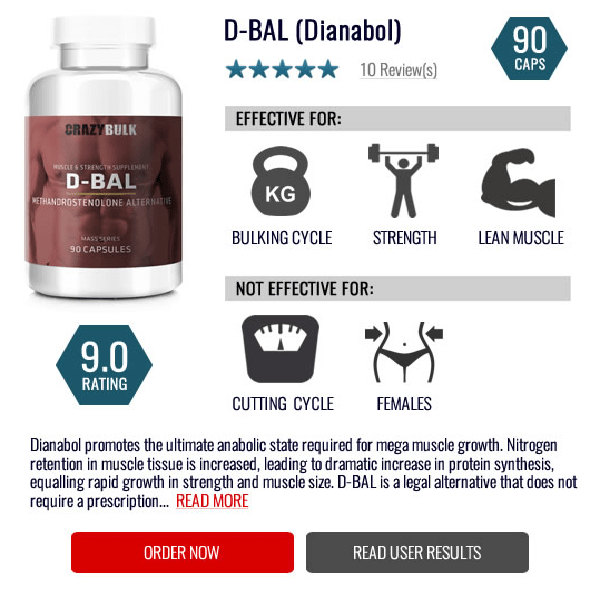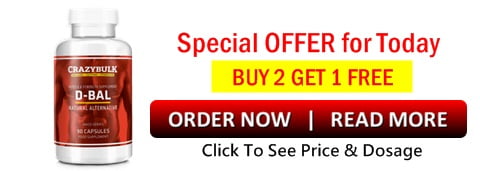Introduction
Contents
Dianabol, also known as methandrostenolone, is an anabolic steroid that is popular among bodybuilders and athletes due to its ability to rapidly increase muscle mass and strength. It was first developed in the 1950s by the pharmaceutical company Ciba as a way to help athletes in the Olympics gain a competitive edge. Since then, it has become a widely used performance-enhancing drug.
One of the most important aspects of using Dianabol is understanding its half-life. Half-life refers to the amount of time it takes for half of the drug to be eliminated from the body. Knowing the half-life of Dianabol is essential for optimizing the dosing and cycle planning. Improper use of Dianabol can result in a range of side effects, so understanding its half-life can help mitigate these risks and maximize its benefits. In this article, we will explore the concept of Dianabol half-life in detail, including its timeline, factors that affect it, potential side effects, and how to use a half-life calculator to determine optimal dosing and cycle planning.
What is Dianabol Half-Life?
Half-life is a term used to describe the amount of time it takes for half of a drug to be eliminated from the body. This concept is important because it determines the duration of a drug’s effects and how often it needs to be administered.
Dianabol Half-life is relatively short as compared to other anabolic steroids. Its half-life is approximately 4-6 hours, meaning that after this time period, half of the drug has been eliminated from the body. This short half-life can make it challenging to maintain stable blood levels of the drug, which can impact its effectiveness.
When a drug’s half-life is short, it can result in a rapid onset of action, followed by a rapid decline. This can lead to fluctuations in the blood levels of the drug, which can impact its efficacy. For example, if blood levels of Dianabol drop too low, it may not have the desired effect on muscle growth and strength.
Additionally, the short half-life of Dianabol can also impact its potential side effects. When the drug is rapidly eliminated from the body, it can cause a sudden drop in testosterone levels, leading to symptoms such as mood changes, low libido, and fatigue.
Understanding the half-life of Dianabol is important for determining the optimal dosing schedule to maintain stable blood levels of the drug. By doing so, it is possible to reduce the risk of side effects and maximize the benefits of Dianabol for muscle growth and athletic performance.
Factors Affecting Dianabol Half-Life
Several factors can affect the Dianabol half-life, including metabolism and elimination in the body, age, weight, other physiological factors, and drug interactions with other medications or supplements.
Metabolism and elimination of Dianabol in the body: Dianabol is metabolized in the liver and excreted in the urine. The efficiency of these processes can vary from person to person and can affect the drug’s half-life. Factors such as liver function, hydration status, and urinary pH can impact the speed at which Dianabol is eliminated from the body.
Age, weight, and other physiological factors: Age, weight, and other physiological factors can impact the absorption, distribution, metabolism, and elimination of drugs in the body, including Dianabol. For example, older individuals may metabolize drugs more slowly, leading to a longer half-life. Additionally, individuals with a higher body fat percentage may have a longer half-life of Dianabol due to its lipophilic nature.
Drug interactions with other medications or supplements: Dianabol can interact with other medications or supplements, which can impact its half-life. For example, drugs that increase liver enzyme activity can enhance the metabolism of Dianabol, leading to a shorter half-life. Conversely, drugs that inhibit liver enzyme activity can decrease the metabolism of Dianabol, leading to a longer half-life.
It is essential to consider these factors when determining the optimal dosing schedule for Dianabol. For example, older individuals may require a lower dose or less frequent dosing to avoid side effects associated with a longer half-life. Additionally, individuals taking other medications or supplements should consult with their healthcare provider to ensure that there are no drug interactions that could impact Dianabol half-life.
Dianabol Half-Life Timeline

Understanding the timeline of Dianabol half-life can help inform dosing and cycle planning for optimal results and minimizing side effects.
Peak concentration: After taking Dianabol, peak blood concentrations are typically reached within 1-2 hours. This rapid onset of action is due to the drug’s short half-life and ability to be absorbed quickly.
Steady-state levels: After repeated doses of Dianabol, steady-state levels are typically achieved within 4-5 days. Steady-state levels refer to when the drug is being eliminated at the same rate that it is being absorbed, resulting in stable blood concentrations.
Elimination: Dianabol half-life is of approximately 4-6 hours, meaning that after this time period, half of the drug has been eliminated from the body. It takes approximately 16-24 hours for the drug to be fully eliminated from the body.
Dosing and cycle planning: Understanding the timeline of Dianabol half-life is crucial for optimal dosing and cycle planning. Due to its short half-life, some individuals may opt to split their daily dose into two or smaller doses to maintain more stable blood levels of the drug. Additionally, individuals may choose to cycle Dianabol for 4-6 weeks to avoid potential side effects associated with longer-term use.
Dianabol half-life of pills, injections, powders, and sprays: The half-life of Dianabol is the same regardless of the form in which it is administered. Whether Dianabol is taken in the form of pills, injections, powders, or sprays, its half-life remains around 4-6 hours.
In conclusion, understanding the timeline of Dianabol half-life is crucial for optimal dosing and cycle planning. By doing so, individuals can minimize the risk of potential side effects and maximize the benefits of Dianabol for muscle growth and athletic performance.
Potential Side Effects of Dianabol and Half-Life Considerations
Dianabol is a potent steroid that can have potential side effects, including liver toxicity, testosterone suppression, and estrogenic effects. Understanding Dianabol’s half-life is crucial for managing these side effects.
Liver toxicity: Dianabol is a 17-alpha-alkylated steroid, which means that it has been modified to pass through the liver without being broken down. This modification can lead to liver toxicity and potentially life-threatening liver damage. Monitoring liver function tests and avoiding alcohol and other liver-toxic substances during Dianabol use can help mitigate this risk.
Testosterone suppression: Dianabol can suppress endogenous testosterone production, leading to a host of potential side effects such as decreased libido, erectile dysfunction, and muscle loss. Understanding the half-life of Dianabol can help individuals time their post-cycle therapy (PCT) to minimize the risk of testosterone suppression and facilitate natural testosterone production.
Estrogenic effects: Dianabol can also convert to estrogen in the body, leading to potential side effects such as gynecomastia (breast tissue growth) and water retention. Understanding Dianabol’s half-life can help individuals time their use of anti-estrogen medications such as aromatase inhibitors or selective estrogen receptor modulators (SERMs) to mitigate these side effects.
Monitoring for side effects and seeking medical advice if necessary: It is essential to monitor for potential side effects of Dianabol use and seek medical advice if necessary. Regular blood work to monitor liver function, testosterone levels, and estrogen levels can help identify potential side effects early on and prevent long-term damage.
In conclusion, Dianabol is a potent steroid that can have potential side effects. Understanding Dianabol half-life is crucial for managing these side effects and optimizing the dosing and cycle planning for maximum benefits and minimal risk. Regular monitoring for side effects and seeking medical advice if necessary can help ensure safe and effective Dianabol use.
Dianabol Half-Life Calculator
Using a Dianabol half-life calculator can help individuals determine the optimal dosing and cycle planning for Dbol. These calculators take into account factors such as drug half-life, dosage, and frequency of administration to estimate drug levels in the body over time.
To use a Dianabol half-life calculator, one would typically input the drug’s half-life, dosage, and frequency of administration. The calculator would then estimate the drug levels in the body at different time points, including peak concentration, steady-state levels, and elimination.
For example, suppose an individual is planning to use Dianabol at a dosage of 30mg/day and wants to know how long it will take for the drug to reach steady-state levels in their body. They can input these values into a half-life calculator and obtain an estimate of steady-state levels after approximately five days of use.
Alternatively, suppose an individual wants to plan a Dianabol cycle and wants to know how long it will take for the drug to be eliminated from their body after discontinuing use. They can input the drug’s half-life into the calculator and obtain an estimate of elimination time, which would depend on factors such as the individual’s metabolism and elimination rate.
Using a Dianabol half-life calculator can help individuals optimize their Dbol dosing and cycle planning for maximum benefits and minimal risk. It is important to note, however, that half-life calculators are only estimates and that individual factors such as metabolism and elimination rate can vary, leading to individual differences in drug levels and side effects.
Conclusion
Understanding Dianabol half-life is crucial for optimizing the dosing and cycle planning for bodybuilders and athletes. By taking into account factors such as drug half-life, dosage, and frequency of administration, individuals can estimate drug levels in the body over time and plan their cycles accordingly.
It is important to remember that Dianabol is a potent steroid that can have potentially harmful side effects if used irresponsibly or without proper monitoring. Potential side effects include liver toxicity, testosterone suppression, and estrogenic effects. Therefore, it is essential to use Dianabol responsibly and monitor for any signs of adverse effects.
In conclusion, Dianabol can be a valuable tool for bodybuilders and athletes seeking to improve their performance and achieve their fitness goals. However, it is essential to understand Dianabol half-life and potential side effects and use it responsibly to minimize harm and maximize benefits. With proper use and monitoring, Dianabol can be an effective and safe addition to a fitness regimen.
FAQs
How long does it take for Dianabol to get out of your system?
The detection time for Dianabol in the body can range from 5 to 6 weeks, depending on several factors, such as the dose, duration of use, individual metabolism, and the type of drug test used.
How many mg of Dianabol should I take a day?
The recommended dosage of Dianabol for performance enhancement is between 15 to 50mg per day, taken in divided doses throughout the day. However, the optimal dosage may vary depending on several factors, such as age, weight, experience with steroids, and fitness goals.
What is the half-life of Dianabol 10 mg?
The half-life of Dianabol is approximately 3 to 5 hours. This means that after this time, half of the drug will have been eliminated from the body.
How often do you inject Dianabol?
Dianabol is an oral steroid and is not typically injected. It is usually taken orally in pill form.
How much muscle do you gain on Dbol?
The amount of muscle gain that one can achieve with Dianabol can vary depending on several factors, such as the dosage, duration of use, individual metabolism, diet, and training program. Generally, users can expect to gain 10-20 pounds of muscle mass in a 4-6 week cycle.
What are the risks of Dianabol?
The use of Dianabol can have several potential risks and side effects, including liver toxicity, increased blood pressure, acne, hair loss, mood swings, and gynecomastia (enlarged breast tissue in men). Long-term use of Dianabol can also increase the risk of cardiovascular disease.
Should I take Dbol before or after a workout?
There is no definitive answer to this question, as the optimal timing for taking Dianabol may vary depending on individual preferences and goals. Some users prefer to take it before workouts to increase energy and performance, while others prefer to take it after workouts to aid in recovery.
Can you gain muscle with Dianabol?
Yes, Dianabol is known to be an effective steroid for increasing muscle mass and strength. It works by increasing protein synthesis and nitrogen retention in the muscles, leading to increased muscle growth.
Which Dbol is best?
There is no one “best” Dianabol brand or type. However, it is important to ensure that any Dianabol purchased is of high quality and from a reputable source to ensure safety and effectiveness.
How do I know if my Dbol is working?
Signs that Dianabol is working may include increased strength, improved endurance, and increased muscle mass. However, it is important to note that these effects may also be accompanied by potential risks and side effects.
Can you take Dbol without a test?
Yes, Dianabol can be taken alone without testosterone. However, it is important to note that the use of any steroid should be done under the guidance of a medical professional.
How can I reduce the side effects of Dianabol?
To reduce the potential risks and side effects of Dianabol, it is important to follow the recommended dosage and cycle length, maintain a healthy diet and exercise program, and consult with a medical professional before use. Additionally, supplementing with liver support supplements and performing regular blood tests may also help reduce the risk of side effects.
What is the half-life of oral steroids?
The half-life of oral steroids can vary depending on the specific steroid. For example, the half-life of Dianabol is approximately 3 to 5 hours, while the half-life of Anadrol is approximately 8 to 9 hours. Other oral steroids, such as Winstrol and Anavar, have a longer half-life of approximately 9 hours and 9 to 10 hours, respectively. It is important to note that the half-life of a steroid can have an impact on its efficacy and potential side effects, as well as the dosing and timing of the steroid. It is recommended to consult with a medical professional before using any steroid.
Information provided by: https://supplementoo.com/
REFERENCES
- Edvardsson B. Hypertensive encephalopathy associated with anabolic-androgenic steroids used for bodybuilding. Acta Neurol Belg. 2015 Sep;115(3):457-8. DOI: 10.1007/s13760-014-0378-8. No abstract is available.
- ALVA J et al . RELIEF OF THE PRURITUS OF JAUNDICE WITH METHANDROSTENOLONE AND SPECULATIONS ON THE NATURE OF PRURITUS IN LIVER DISEASE. Am J Med Sci. 1965 Jul;250:60-5. No abstract is available.
- Germanakis I et al . Oxidative stress and myocardial dysfunction in young rabbits after short-term anabolic steroids administration. Food Chem Toxicol. 2013 Nov;61:101-5. DOI: 10.1016/j.fct.2013.03.018.
- Hagedorn HW et al . Detection of methandienone (methandrostenolone) and metabolites in horse urine by gas chromatography-mass spectrometry. J Chromatogr. 1992 Jun 10;577(2):195-203.
- Zhong Q et al . A novel protocol for molecularly imprinted polymer filaments online coupled to GC-MS for the determination of androgenic steroids in urine. J Sep Sci. 2013 Dec;36(24):3903-10. doi: 10.1002/jssc.201300874.
- SOLER-ARGILAGA C. [CLINICAL STUDY ON METHANDROSTENOLONE]. Med Clin (Barc). 1963 May;40:334-46. Spanish. No abstract is available.
- Elsharkawy AM et al . [Cholestasis in young men after taking anabolic steroids]. Praxis (Bern 1994). 2012 May 9;101(10):661-4. DOI: 10.1024/1661-8157/a000949. German. No abstract is available.
- Kinson GA et al . Effects of 5 alpha-dihydrotestosterone and methandrostenolone in male guinea pigs. Arch Androl. 1981 Feb;6(1):83-91.


